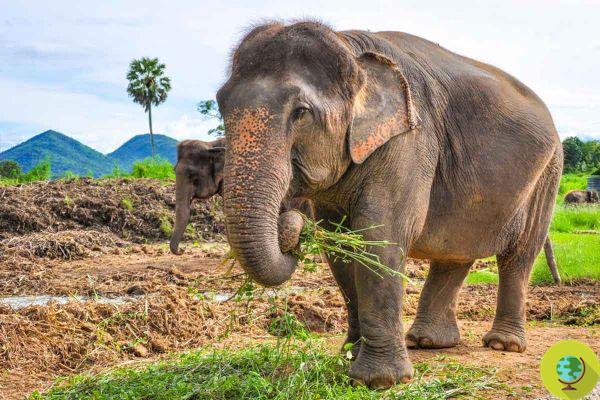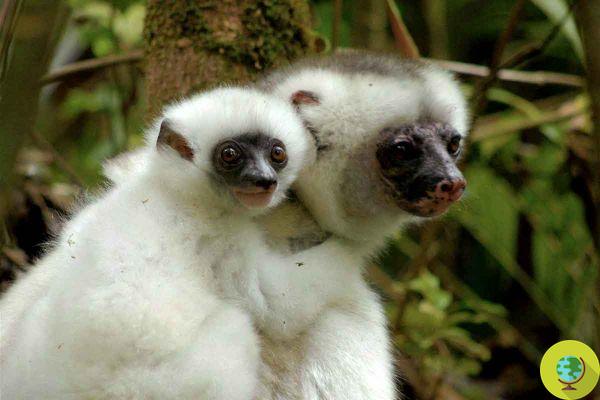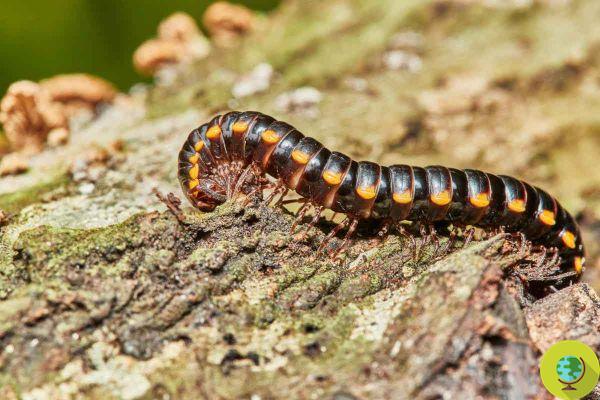From the gorilla that eats clay to the jaguar that nibbles the ayahuasca plant. Let's find out about the natural remedies for animals.
He is about to end up run over, his mother saves himHumans aren't the only animals who take natural remedies to treat pain, prevent suffering, or just feel better, animals also self-medicate. From the gorilla that eats clay to the jaguar that nibbles the ayahuasca plant.
Self-medication is not an exclusive concept of human beings. There are many species of animals that decide to ingest certain substances not only for nutritional reasons, but also to treat, prevent and improve their well-being. There are now several studies analyzing the causes and benefits of these behaviors in the animal kingdom.
Animals and their natural remediesLet's find out together some natural remedies that our animal friends take from the "pharmacy of nature".
Index
Intestinal health and digestive problems
Geophagia, or eating the earth, is a habit by which some animals get those vitamins and minerals that are deficient in their diet. Apart from this there are also other benefits derived from this trend. Some plants, as a defense, contain toxic chemicals for the animals that eat them, and primates, in order to eat them by absorbing the toxins without damage, eat them by also ingesting the soil. Changing diets even suddenly can cause stomach pain and diarrhea, a problem that mountain gorillas and rhesus macaques solve by eating clay.
Very well known is the practice of some mammals such as dogs and cats, but also of their wild relatives - wolves, lions, tigers and the like - who eat grass to perform vegetable purges and thus fight their intestinal problems.
Family planning

©Xiebiyun/Shutterstock
From aphrodisiac use, to birth control, it is very surprising how some animals rely on a plant and animal pharmacy at every stage of the reproductive journey. The male of the great bustard - the heaviest flying bird in the world - is known to eat bladder beetles before mating season to increase his sexual attractiveness. These insects also contain cantharidin, a substance effective against gastrointestinal bacteria.
Primates are particularly adept at family planning. In Brazil, murichi add plants to their diet to increase or decrease their fertility. Pregnant lemurs in Madagascar add tamarind and fig leaves and bark to increase their milk supply, kill parasites, and increase the chances of a safe birth.

©Lemur Conservation Network/Facebook
It has also been documented that pregnant female elephants in Kenya eat the leaves of certain specific trees to induce birth, and no matter where the plant is, they can travel great distances to eat it.
Insect repellents and antifungals
For animals, some insects and parasites are a daily, sometimes even lethal, concern. Indeed, the removal of parasites is one of the primary purposes of the use of natural medicine by animals. In starling nests we might find wild carrot leaves placed there to prevent mites; instead, neotoma rodents place bay leaves at the entrance to their den to ward off fleas.
Often times, an animal's best way to repel insects is to use the insects themselves. Capuchin monkeys rub their bodies with millipedes to obtain a benzoquinone toxin that repels insects and parasites.

©Sammara/Shutterstock
Drugs and alcohol in animals
Although it would appear to be behavior unique to humans, animals also eat plants to get high or drunk. Dolphins, for example, voluntarily touch puffers to take in small concentrations of tetrodotoxin. Baboons and wild boars, on the other hand, ingest hallucinogenic roots, while jaguars (although it has not been proven to be for recreational purposes) munch on the bark of Banisteriopsis caapi, a basic ingredient used by the natives of Amazonia for Ayahuasca. Siberian reindeer have also been observed to consume the Amanita muscaria mushroom on numerous occasions.
Elephants and monkeys in order to get drunk on purpose, feed on the fermented fruits of the palms due to the alcohol they contain, sometimes causing, as happens for us humans, so much damage in their lives, like drunken elephants destroying crops and drunk monkeys abandoning their children.
"The search for drug intoxication is a primary motivational force in the behavior of organisms," writes psychopharmacist Ronald Siegel in his book Intoxication.
Zoopharmacognosy, the animal "phytotherapy"Today, zoopharmacognosy is a science that studies the methods, practices and the use of natural remedies used by wild animals to cure themselves of diseases. In 1978, University of Pennsylvania ecologist Daniel H. Janzen was the first to propose the concept of self-medication in animals, and in 1987, US biochemist Eloy Rodríguez used zoopharmacognosy to refer to this practice that has been identified for centuries in several species.
Fortunately, science is paying more and more attention to animal self-medication tactics. Nature is always full of gifts, and by listening to and observing biodiversity in the same way our ancestors did before, we may discover new remedies that are potentially useful for ourselves as well.
Read also:
- Wild animal diseases are an (unheard) signal that our planet is sick
- From the meatball frog to the sea biscuit: the 213 new species discovered in 2020
- The most exciting animal rescues and releases of 2020
- At risk of extinction as many as 600 species of animals more than expected. I study
- Namibia is auctioning 170 elephants at risk of extinction due to drought and conflict with humans


























